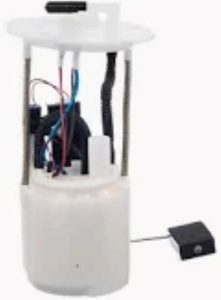Fuel pump flow rate : the Volume of fuel a Pump can deliver to Engine in given time z frames it is normally measure d as LPH Liters per Hour or GPH gallons Per hours for cars. This directly affects engine performance, as engines require set fuel quantities to maintain the best air-fuel ratio for combustion. Passenger vehicle-grade fuel pumps can usually provide you with flow rates in the range of 90-130 LPH, while the high-performance ones made for racing or fitted on turbocharged cars may exceed that mark beyond 250 LPH to suffice your needs related to high-horsepower motors. An under-flowing electric water pump can starve the engine, leading to a dangerously lean condition that could make your car run hot--and eventually gone-terminal.
Factors affecting the flow rate among fuel pumps are known to be the design of pump, voltage supply and pressure in your systems. Although the majority of pumps operate at about 12 volts, a small voltage drop from say 12 to even as little as11 volts reduces flow rate by up to10%. This sudden change in flow impacts performance severely, especially under high demand tones. Another test automotive experts perform is to see what voltage the fuel pump gets; a consistent power supply must be maintained, otherwise flow will not remain within established limits.
It is sensitive to pressure within the fuel system, which also affects flow rate. Most factory vehicles command roughly 40-60 PSI of fuel pressure, however high-performance systems may require over 100PSI. For example, a performance automobile fitted with an engine that has been turbocharged will almost certainly require more fuel flow delivered at higher pressures than the vehicle's stock pump provides to keep up when you are accelerating hard. When the pump can not provide this demand it will reduce power and cause engine misfires if pushed high in RPM.

Checking the fuel flow rate is a typical service test and one that can be carried out on any vehicle experiencing performance issues. One of the most important steps in ensuring an engine will function properly is whether a pump delivers fuel at its rated capacity, and we see technicians reach for flow meters here as well. Reduced engine power causes poor acceleration and economy -- even if a fuel pump flow rate is just 10% below spec. To quote, Henry Royce – Co-founder of Rolls-Royce "Quality remains long after the price is forgotten" which can't be more true in this case as A properly maintained fuel system assures consistent and trouble free performance.
Choosing a fuel pump designed to deliver the correct amount of flow rate that meets your engine specifications will assure seamless fuel delivery, proper acceleration and since it does its job with more efficiency. High-performance drivers interested in being protected from the dangers of low flow can go a step further by upgrading to a high-flow pump, such as The Fuel Pump for additional assurance that their vehicle will perform consistently—not just adequately—under grueling conditions. Correct flow ensures the engine is supplied with constant-volume pressurized air at all times, for consistent power and efficiency regardless of driving conditions.
